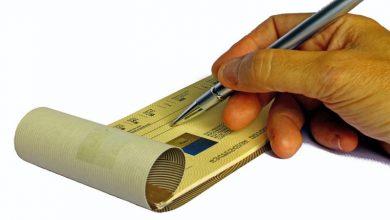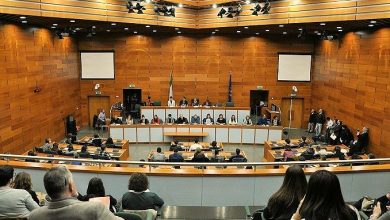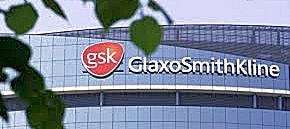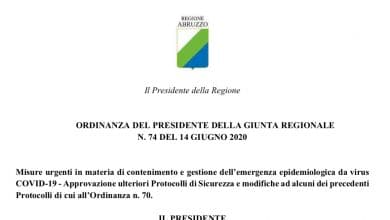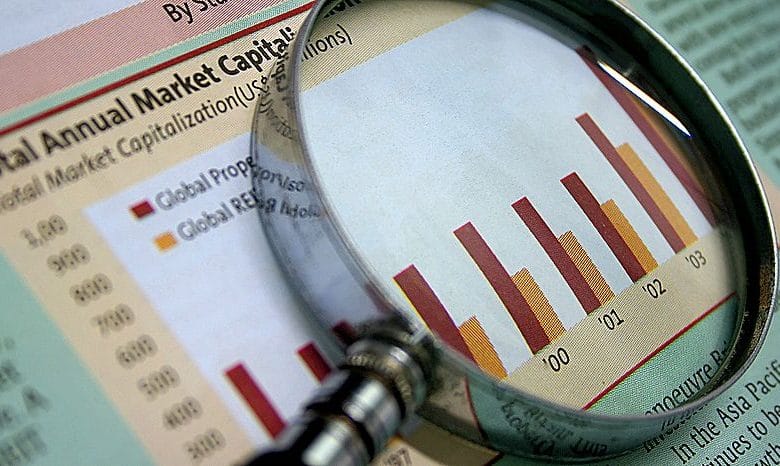

The use of these medicines therefore continues to grow: Molise (+21.9%) and the Autonomous Province of Trento (+17.3%) are the Regions with the greatest increases compared to 2013. Generics save the State money: they are sale at a lower price, about 20-50% less than the original medicine and since 2000 have allowed the State to save 4 billion euros. A considerable figure that could tend towards an increase if there weren't yet forms of skepticism about the effectiveness of the effects.
Those who have the least doubts of all are the inhabitants of Emilia Romagna (73.9%), Umbria (73.6%) and the Autonomous Province of Bolzano (73.1%), while Lazio (67.4%), the Autonomous Province of Trento ( 68.1%) and Calabria (68.6%) are the Regions with the lowest levels of consumption. Pantoprazole surpasses lansoprazole as the most expensive active ingredients with expired patents (both proton pump inhibitors against ulcers and reflux).
Only 12% of the medicines dispensed in Italy is generic today, while in the main pharmaceutical markets of the largest European countries, generic medicines represent on average about 50% of the units sold (with peaks of 70% in countries such as Germany) and contribute 20% at the expense. On the subject of "equivalents", the European Medicines Agency, EMA, has also expressed itself, declaring itself ready to share its evaluations of requests for authorizations of equivalent medicines in real time with the regulatory bodies of countries outside the European Union. This initiative aims to promote the authorization and timely availability of safe, effective and high-quality generics worldwide.
Rossella Gemma – 28 January 2015 – Pharmacist33
Related news: Drugs: Aifa, purchases unchanged in 2014; 23 packs each. The use of drugs in Italy - OsMed Report (January - September 2014)
Sildenafil, sales boom for Viagra clone: +24% compared to 2013
NOTE
What AIFA says in the OsMed Report: “Also in 2014 there was a growing incidence of 13.6% - on the agreed expenditure - of the sharing paid by the citizen (including the co-payment per package and the portion paid by the citizen exceeding the reference price on medicines with expired patents) compared to the 12.7% recorded in 2013. The total amount of expenditure for sharing to be paid by the citizen on class A medicines was equal to 1,121 million euros, an increase compared to the same period of the previous year of +4.4%, attributable mainly to the increase in the portion paid by the citizen exceeding the reference price for medicines with expired patents (+8.7%), while a reduction in the fixed co-payment per prescription was observed (-2.4%). The ticket per package, with an expenditure value of 411 million euros, accounted for 36.7%, while the portion paid by the citizen exceeding the reference price for medicines with expired patents, with 710 million euros, accounted for the residual 63.3%”
( … )
“Expired patent medicines now represent more than half (51.1%) of approved pharmaceutical expenditure, up on 2013 by +6.6%, and 70.4% of total DDDs, up on 2013 by +11.9% . The percentage spent on generic medicines (drugs based on active ingredients with expired patents, excluding those that have enjoyed patent protection) was equal to 28.8% of the total of expired patent medicines (Table 12). Overall, the top twenty patent-expired active ingredients represent approximately 50% of the consumption, in terms of DDD, of all patent-expired drugs; pantoprazole and lansoprazole, which dropped to second position in 2014, were the active ingredients with expired patents at the highest expense, with respectively 217.5 and 189.2 million euros”
From the 2012 Osmed Report: The regulation of medicines not covered by a patent has had a significant boost in Italy, above all in light of the legislative interventions enacted since 2000. In particular, with article 85, paragraph 28, of Law no. 338/2000 the current transparency lists were established, ie the lists that group expired patent drugs and the corresponding reimbursement prices, which are published monthly on the AIFA website. Various aspects relating to the regulation of the supply of these drugs were then strengthened and further clarified with the issuing of the Law 405 of 2001, which established some main points: • for the purposes of patent protection, only patents on the active principle are considered valid; • all medicines based on the same active principle, with the same route of administration, pharmaceutical form and unit dosage, whether they are with a common denomination or with a fancy denomination, upon expiry of the patent protection are considered mutually substitutable; • the package with the lowest price among the equivalent and mutually replaceable ones constitutes the reimbursement price (reference price 1 ) which is charged to the NHS; any difference between the medicine dispensed and the reference price is to be paid by the patients (with the exception of war invalids receiving life pensions); • the Regions are empowered to adopt suitable provisions on the basis of the effective availability of equivalents in the regional distribution circuit. It should be noted that in Italy the establishment of the Complementary Certificate of Protection (CCP), which took place in 1991, allowed the extension of patent coverage (established at 20 years for medicinal products) initially up to a maximum of 18 years beyond the expiry of the patent, thus extending the exclusivity of the exploitation of the molecule up to a maximum of 38 years. The EEC Regulation n. 1768 of 1992 has, in fact, passed the national legislation on the CCP, establishing the Supplementary Protective Certificate (SPC), the maximum duration of which cannot exceed 5 years. Nonetheless, since the entry into force of the CCP in Italy took place earlier than that of the SPC, a large part of the active ingredients present on the Italian market (about 80%), having obtained the CCP, benefited in Italy from a significantly longer coverage than in other European countries. Consequently, even the possible savings for the NHS, deriving from the loss of patent coverage, have been delayed over time precisely in the face of the impossibility of marketing in Italy those generic medicines which have already been present for some time in other European countries. Subsequently, in order to mitigate the negative effects mentioned above, a measure was introduced to progressively adjust the duration of the SPC to that present in other European countries (Law n. 112 of 2002), according to a reduction procedure established in six months for each calendar year starting from 1 January 2004. With Legislative Decree 39/2009, converted, with amendments, by Law 24 June 2009, n. 77, some rules have been introduced which regulate the economic aspects relating to this area of the pharmaceutical market, which can be described as follows:
1. 12% reduction in the public price of equivalent medicines;
2. the NHS deducts from the pharmacist's remuneration, by way of recovery of the value of the extra discounts applied by pharmaceutical companies during the year 2008, 1.4% on the gross expense;
3. reduction of the margins of the supply chain relating to drugs equivalent to 58.65% for pharmaceutical companies (the shares of pharmacists and wholesalers were then modified by Law 122/2010 - see section 1.4). The remaining share of 8% (at 66.65%) is redistributed among wholesalers and pharmacists.
4. the owner of a medicine whose patent has expired, in the 9 months following the date of authorization of a first equivalent medicine, can reduce the price to the public of his medicine, provided that the difference between the new price and that of the corresponding medicine equivalent is greater than €0.50 for drugs whose cost is less than or equal to €5, or, in the case of medicines in single-dose packages, provided that the difference is greater than €1 for drugs whose cost is greater than €5 € and less than or equal to €10, or is greater than €1.50 for drugs whose cost is greater than €10 (this rule was subsequently repealed by Legislative Decree No. 179 of 18 October 2012, converted with amendments by Law December 17, 2012, no. 221).
Subsequently, the Law 30 July 2010 n. 122 (conversion of Law Decree 31 May 2010 n. 78) again reduces the price to the public of equivalent medicines by 12.5%, from 1 June to 31 December 2010, with the exclusion of medicines originally covered by patents or which have benefited from licenses deriving from this patent. Finally, with Determination of 8 April 2011, the AIFA, in application of the provision referred to in paragraph 9, of article 11 of the Legislative Decree 78/2010, carried out a reduction in the reference prices of the medicines included in the transparency lists, on the basis of a survey of the prices in force in the countries of the European Union. The description of the methodology followed in setting the new reference prices is available on the AIFA website (http://www.agenziafarmaco.gov.it/it/content /elenco-dei-farmaci-lista-di-trasparenza-aifa -effective-from-15-April-2011). The “Balduzzi” Decree Law (Law 189/2012) has established a relevant principle in the regulation of the market for medicines with expired patents, i.e. such medicines cannot be classified as medicines paid by the NHS with effect prior to the expiry date of the patent or of the complementary protection certificate, published by the Ministry of Economic Development in accordance with current legal provisions. The active ingredients that lost their patent coverage during 2012, or the new packs of active ingredients that previously lost their patent protection and which entered the AIFA transparency lists following the authorization of equivalent generics, are listed in table 1.7 .1.
Expired patent medicines, in particular, and more generally medicines paid for by the NHS dispensed under conventional assistance have been the subject of an evolution of the provisions on the subject of filling in the prescription, providing for the possibility for the doctor to indicate exclusively the active ingredient of the medicinal product and its packaging. This regulation originates from the combined application of article 11, paragraph 12 of the Legislative Decree January 24, 2012, n. 1 (so-called Liberalization Decree) and article 15, paragraph 11-bis of the Law Decree of 6 July 2012 n. 95, converted with amendments by Law 7 August 2012 n. 135 (so-called Spending Review Decree); the latter subsequently replaced by article 13-bis, paragraph 1, of Legislative Decree 18 October 2012, n. 179, converted, with modifications, from law 17 December 2012, n. 221. For further information on the subject, it is advisable to consult the guideline for the adaptation of the IT procedures of the electronic prescription (http://sistemats1.sanita.finanze.it/). In order to allow for the implementation of the relevant legislation, AIFA publishes the lists of class A and H medicines every month with evidence of the equivalence group, i.e. the grouping codes of medicines based on the same active ingredient and with the same packaging (same route of administration, same number of dosage units, same weight of the dosage unit). During 2012, the legislator also intervened with regulations aimed at accelerating access to the market for equivalent generic medicines. Specifically, article 12, paragraph 6, of Legislative Decree 13 September 2012, n. 158, converted with modification by Law 8 November 2012, n. 189, delimits the possibility for a generic medicine to obtain automatic classification at the expense of the NHS, skipping the process of negotiating the price, if the company that owns it proposes a sale price that is clearly advantageous for the NHS. The subsequent Decree of the Ministry of Health of 4 April 2013, implementing the standard, defines the ranges of reduction of the selling price - compared to that of the reference medicine - in relation to the expected sales volumes (Table 1.7.3).
An area of emerging importance in the context of patent-expired drugs is that of biosimilars. In order to promote correct information on biosimilar drugs at the various levels of the healthcare organization, as well as citizens, the Agency has since July 2012 launched a shared process of synthesis on three relevant points of the debate:
1. Definition and main characterization criteria of biological and biosimilar medicines;
2. Framework of the regulatory provisions in force in the EU regarding biosimilar medicinal products;
3. Role of biosimilars in the economic sustainability of the national health service (SSN).
The process was completed on 28 May 2013 with the publication of the Position paper (for further information, it is advisable to download the document at the following link: http://www.agenziafarmaco.gov.it/sites/default/files/AIFA_POSITION_PAPER_FARMACI_ BIOSIMILARI. pdf). The Position paper clarifies the Agency's position on the subject of the substitutability of biological medicines previously covered by patent with biosimilars, providing the evaluation elements both with respect to the implications in terms of economic sustainability, and with respect to the priority ones in terms of health protection. For further information on the expenditure and consumption of off-patent medicines and biosimilars, please refer to section 7.3 of this Report.
For theand active substances imported from non-EU countries That "they will be able to enter Italy to be used in the production of medicines for human use” underlines Isabella Marta, AIFA Raw Materials Inspection Management Unit, “only if accompanied by a certification from the competent authority of the country of production, which certifies its equivalence to the quality standard valid in Europe, or if accompanied by a GMP certificate from a European country. This measure is to protect the quality of medicines produced and marketed in Italy. Furthermore, AIFA will be able to inspect producers or importers of excipients, in case of suspected non-compliance with the expected quality requirements and, possibly, if deemed appropriate in the context of collaboration with the Ministry of Health, distributors of active substances located in the territory national or established in third countries” ( Guide to the implementation of Legislative Decree n. 17 of 19 February 2014, as regards active substances and excipients )
OsMed report January-September 2014, extract pag. 43, Table 12.
Expenditure and consumption under class A-SSN approved assistance regime of expired patent drugs included in the AIFA transparency lists*: comparison between the first 9 months of 2014 and 2013
Italy
Total consumption
DDD//1,000 inh. Die: 1.035,9
Δ%: 0.0
You use expired patent medicines
DDD/1,000 in ab day: 728,9
% on total DDD: 70,4
Δ% 14/13: 11,9
Gross expenditure on expired patent drugs
€ per capita: 69,2
% on the total expenditure: 51,1
Δ% 14/13: 6,6
% Equivalent expenditure**: 28,8
*The analysis was performed using the transparency lists published monthly by AIFA
** Calculated on the total expense for expired patent medicines. Equivalent drugs are medicines based on active ingredients with an expired patent, with the exception of those that have enjoyed patent coverage, pursuant to art. 1 bis, dated Legislative Decree 27 May 2005, n. 87, converted, with modifications, from Law 26 July 2005, n. 149.

